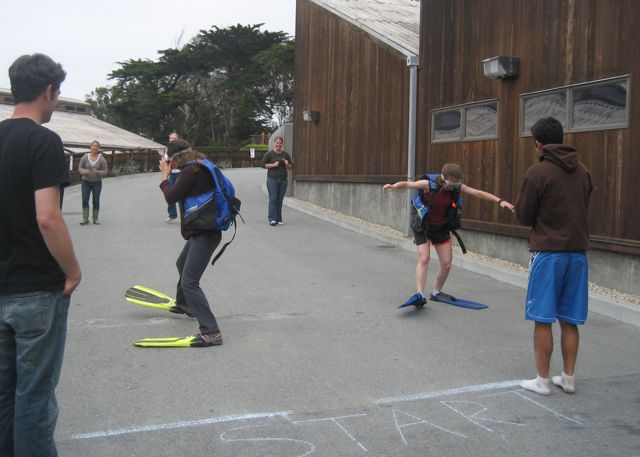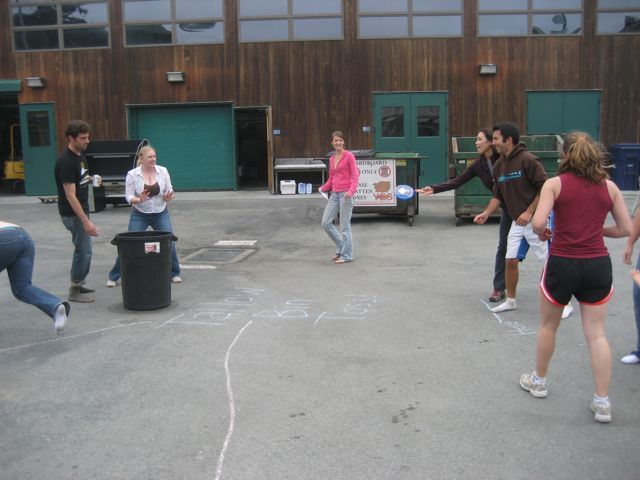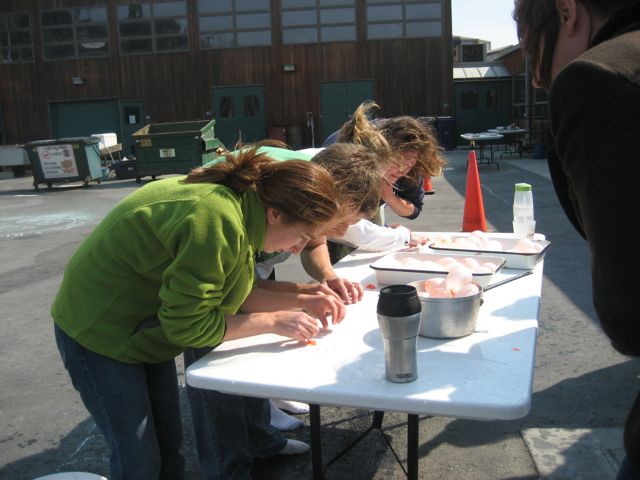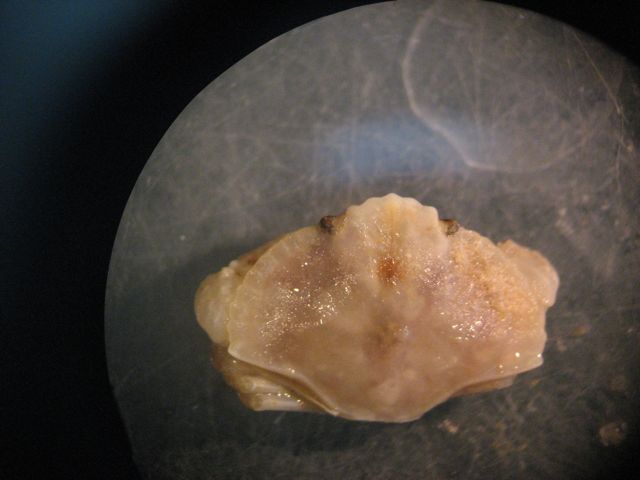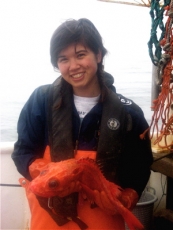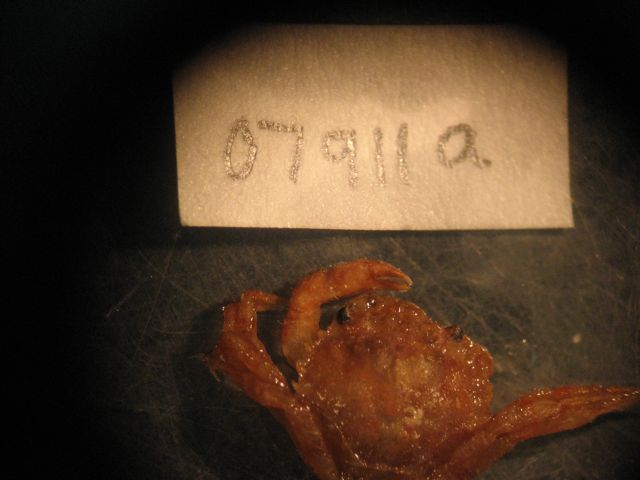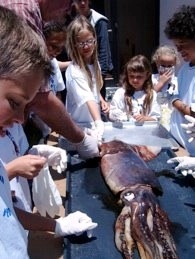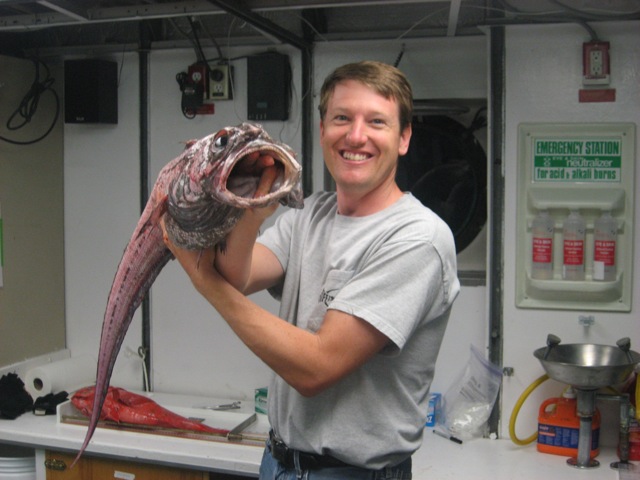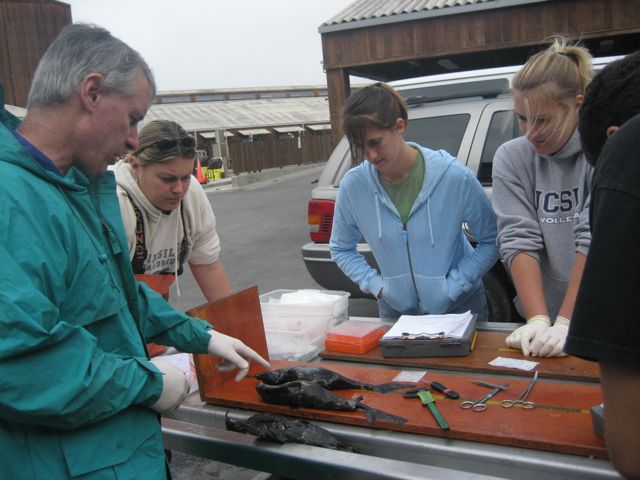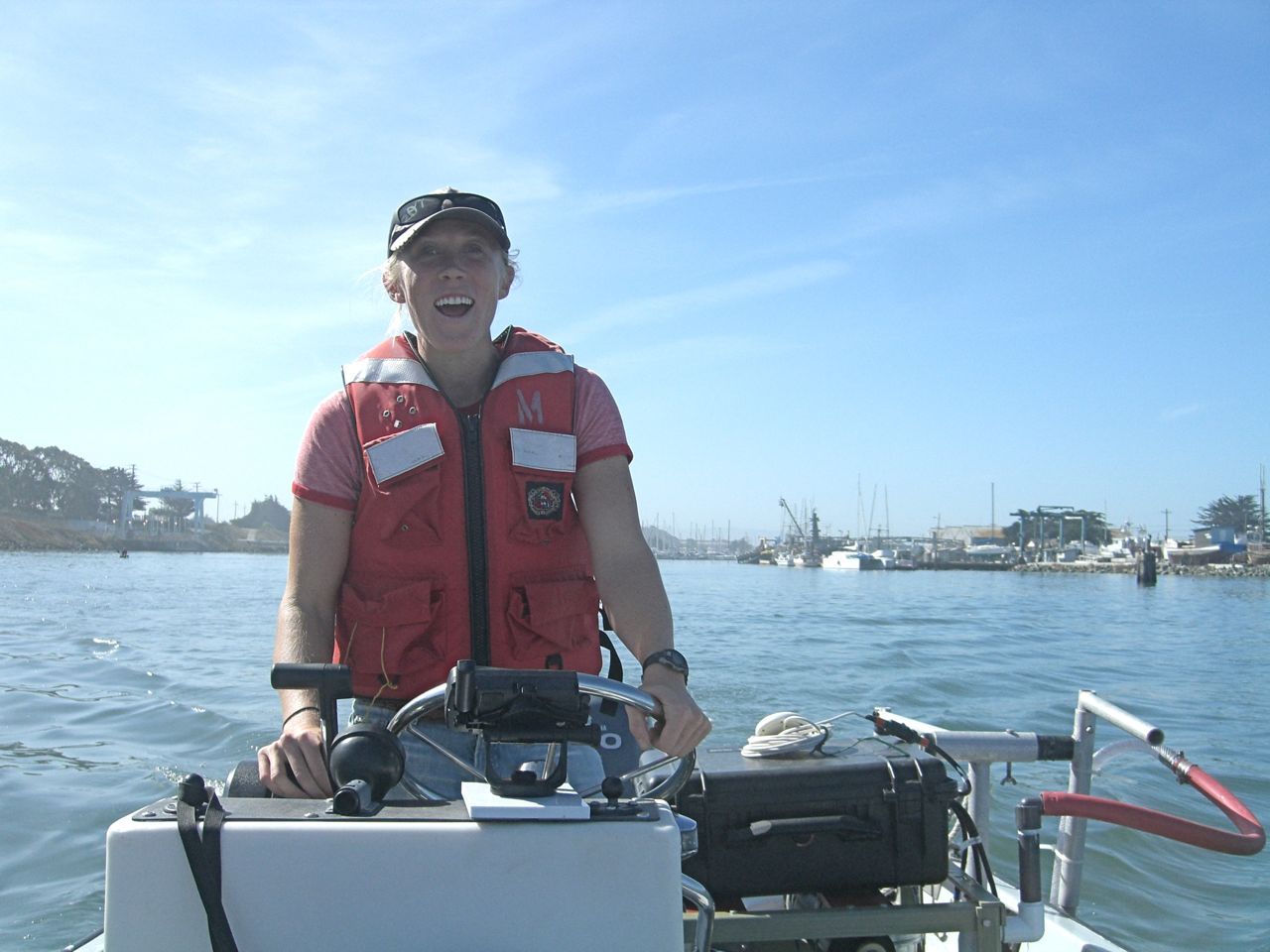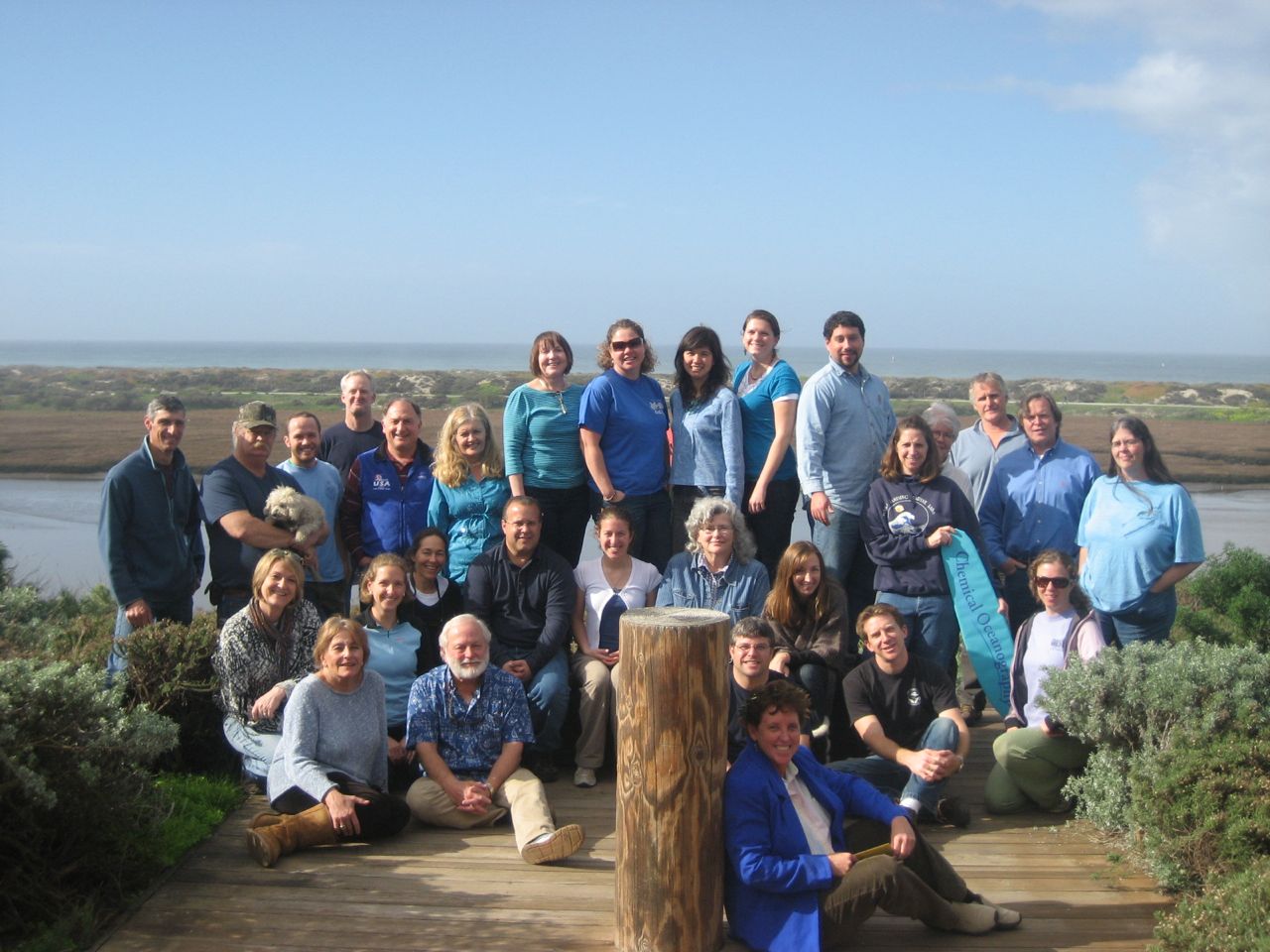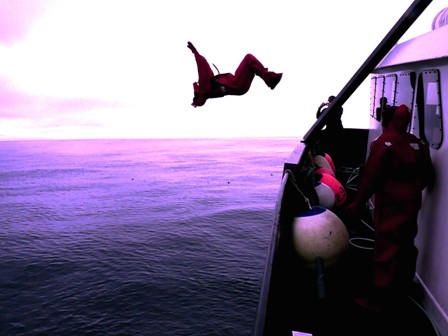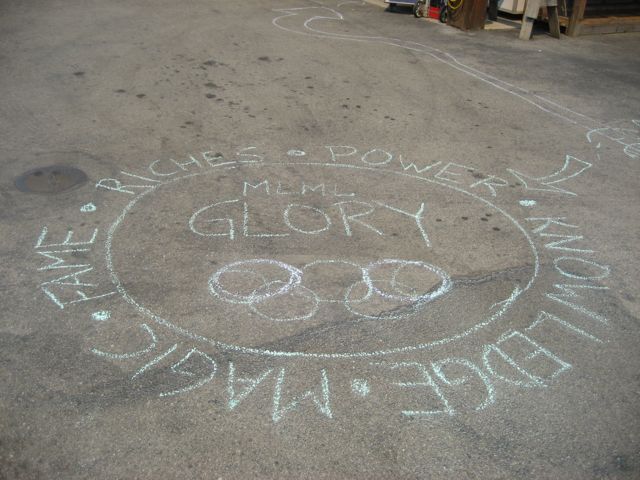
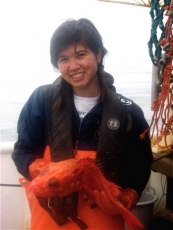
by Erin Loury, Ichthyology Lab
So long, Vancouver. It’s been a good two weeks, steeped in Olympic excitement (especially when we could get the student lounge TV to work). And this year I got that much closer to actually understanding curling. But before we go back about our daily business, free of snow and ice sporting distractions, here are a few more parting shots to honor MLML’s proud Olympians and glorious events:
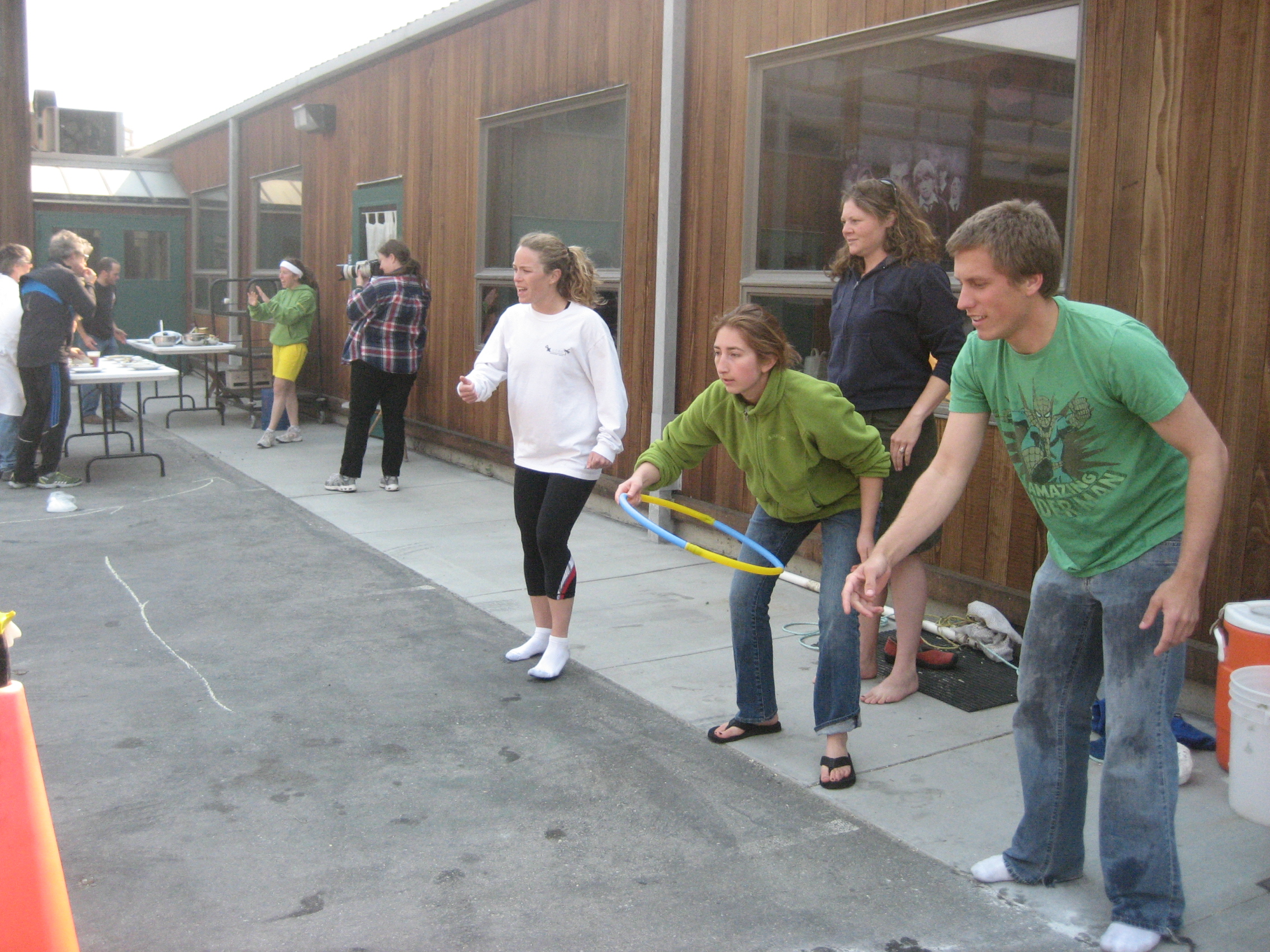
Did you know that hula hoops have their own proud place in science? We actually use them in the field as quadrats (sampling areas) because their round shape has the smallest perimeter to area ratio, and minimizes the possibility of pesky “edge effects.” But they are also great to test your skill at the ring toss!
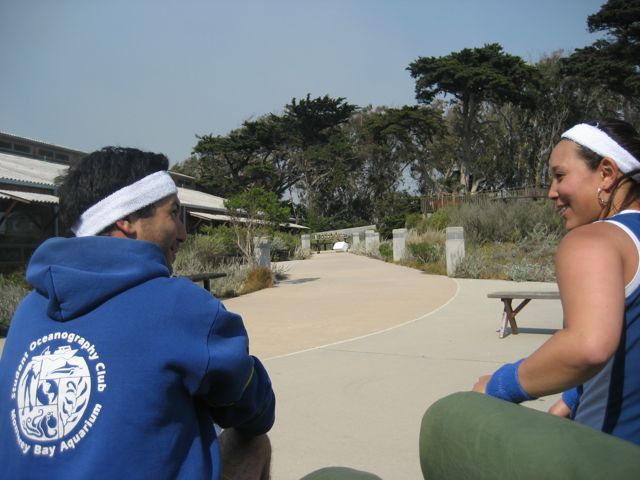
This game of skill is after any grad student’s heart: long-distance beer identification. That white dot in the distance is a cooler, next to a table of bottles. While seated on the couch, contestants had to identify each beer by its label, and the city of origin. Though most could only offer best guesses, a few players swept this field…
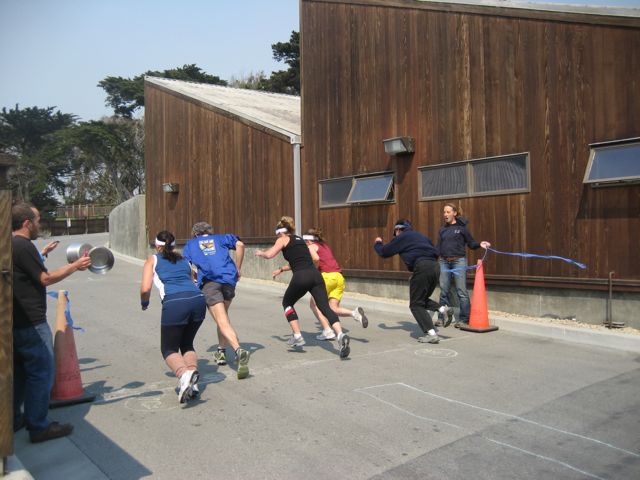
Lest we be categorized as wimpy scientists, we do throw in the odd event of stamina (not counting the Wii “virtual athlete” competition). A few hardy contestants make off on the 2-mile foot race, setting the pace for the next year of Olympic games.



